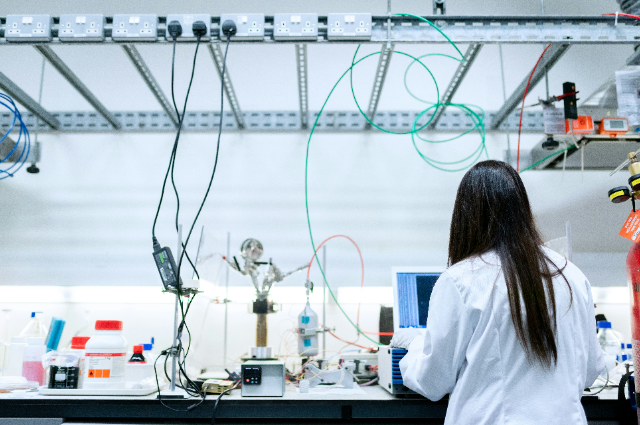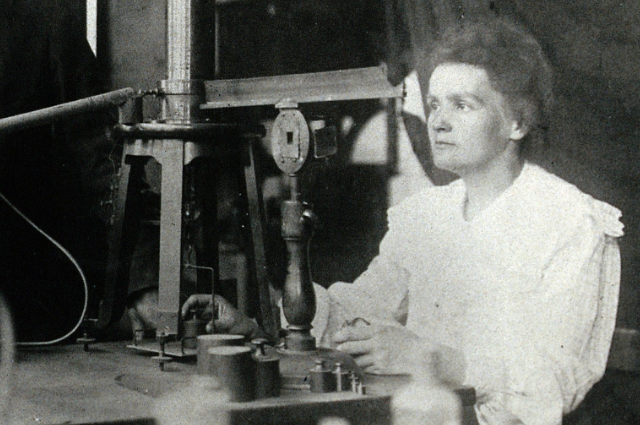
Photo by ThisisEngineering RAEng on Unsplash
Introduction: Why women and girls are important in science?
“Women and girls bring diversity to research, expand the pool of science professionals, and provide fresh perspectives to science and technology, benefiting everyone.”
Theoretically, science should be open to everyone, yet it is still overwhelmingly male.
What is the role of women in science and technology?
They are breaking societal barriers and making a mark in underrepresented fields like science, technology, engineering and other technical roles. The gender gap is alarming, however, with improved opportunities, women and girls can create an impact in the STEM world.
What is the contribution of women in science?
Whether it is Madam Curie or Shakuntala Devi, we have witnessed miracles happening. Madame Curie is the only woman to receive the Nobel Prize in Physics and Chemistry in a gap of just 8 years. Shakuntala Devi is a prodigy who can solve any complex mathematical operation just using her mind.
How to inspire girls in science?
Give a taste of science and technology from an early age. By participating in hands-on and fun engineering and technology activities, from an early age, girls and boys (and their parents) can better understand what they could do as an engineer or doctor of nanotechnology.
Who is a famous woman in science?
Marie Curie, who discovered the radio-active elements radium and polonium and coined the term 'radioactivity', ranks among the world's best known female scientists. She shared the 1903 Nobel Prize in Physics in recognition of her work, making her the first woman to earn the award.
What is the objective of women in science?
Its aim is to spotlight the crucial role of women in science, support aspiring girl and women scientists, and advocate for greater gender equality.
What is women's role in science today in India?
Recent data from the Department of Science and Technology (DST) showed women made up 28% of participants in 2018-19 in extramural Research and Development (R&D) projects, up from 13% in 2000-01. The proportion of women primary investigators in R&D increased more than four times — from 232 in 2000-01 to 941 in 2016-17.
What is the scientific name of women?
The scientific name for human beings is Homo sapiens. It means the scientific name of a female is home sapiens because scientific names are not based on the gender of an organism. Scientific names show the genus and specie of a particular organism.
Why should we empower women especially in science?
Encouraging women to take up such careers can enhance empowerment and promote economic security, while building a diverse and talented STEM workforce. The economic benefits of greater female participation in the sciences are considerable.
What is the symbol of women in science?
The most widely recognized gender symbols are the circle above a cross (♀), signifying female, and the circle below an arrow pointing diagonally upward to the right (♂), signifying male.
Are girls interested in science?
However, women are significantly less likely to enroll in many of the science, technology, engineering, and mathematics (STEM) fields, with the exception of life sciences.
Why girls should study science?
STEM education is also critical in fostering 21st-century skills such as analytical and conceptual thinking and creative problem solving. System interventions are necessary to encourage more girls to take up STEM education.
What is the hashtag for women and girls in science?
Use this hashtag to join the conversation, defy gender stereotypes and spread the word on the need to include more women and girls in STEM fields. On this International Day of Women and Girls in Science, let's reiterate this fundamental message: women need science, and science needs women.
When did women become involved in science?
Women moved into science in significant numbers by 1900, helped by the women's colleges and by opportunities at some of the new universities.
Which gender is better at Science?
Despite the prevalence of stereotyping to the contrary, PISA results show that being proficient in science is not linked to one gender or the other. Of the three subjects assessed by PISA, reading, mathe- matics and science, science is the one in which gender gaps in performance are narrowest.
How many women are in science in India?
One in six. That ratio denotes the current strength of Indian women in science. Even though India is one of the most productive scientific nations, the number of women scientists is far lower than in most countries. The progress to 16.6% has been difficult and slow.
Who were the women in science?
Most influential women in British science history:
- Caroline Herschel (1750-1848)
- Mary Somerville (1780-1872)
- Mary Anning (1799-1847)
- Elizabeth Garrett Anderson (1836-1917)
- Hertha Ayrton (1854-1923)
- Kathleen Lonsdale FRS (1903-1971)
- Elsie Widdowson FRS (1908-2000)
- Dorothy Hodgkin FRS (1910-1994)
How many women are in science?
According to the National Science Foundation, women comprise 43 per cent of the U.S. workforce for scientists and engineers (S&E) under 75 years old. For those under 29 years old, women comprise 56% of the science and engineering workforce.
What is women's role in Science today in India?
Recent data from the Department of Science and Technology (DST) showed women made up 28% of participants in 2018-19 in extramural Research and Development (R&D) projects, up from 13% in 2000-01. The proportion of women primary investigators in R&D increased more than four times — from 232 in 2000-01 to 941 in 2016-17.
Who is India's first woman scientist?
Kamala Sohonie (18 June 1911 – 28 June 1998) was an Indian biochemist who in 1939 became the first Indian woman to receive a PhD in a scientific discipline.
Who is the greatest woman in science?
History's Top 5 Most Influential Women in Science, Technology, Engineering and Mathematics (STEM)
- Marie Curie.
- Rosalind Franklin.
- Dorothy Hodgkin.
- Katherine Johnson.
- Elizabeth Blackwell.
Who are the most powerful women in science?
History is full of women who made enormous contributions to science. Some of them are rightfully well-known, like Marie Curie, Ada Lovelace and Rosalind Franklin. But others, like fossil hunter Mary Anning and NASA pioneer Katherine Johnson, aren't such household names.
Why does science need more women?
“Women and girls bring diversity to research, expand the pool of science professionals, and provide fresh perspectives to science and technology, benefiting everyone.” Theoretically, science should be open to everyone, yet it is still overwhelmingly male.
Conclusion:
In most universities there are more male students than female students on science courses. What is the reason for this? What could be done to balance out the numbers?
In higher education, science subjects are typically dominated by male students. This negatively impacts the world of work, as fewer females then go into the science, technology and engineering sectors. This essay will explore the reasons for the lack of gender diversity in science and suggest ways to create equal opportunities in this area.
The most likely reason for the imbalance is that society reinforces the idea that boys and girls have different interests and abilities. We see this from a very early age when little boys are given cars and Lego while girls get dolls. The former are encouraged to build things whereas the latter learn to care for others. Later on, we are told that girls are better at languages or boys have better spatial awareness. In fact, there is no evidence that biological differences between the sexes make one gender more talented than another at a particular subject. It is society, not nature, that tells us girls should favour arts and humanities and leave maths and physics to the boys.
Coupled with this is the lack of positive female role models youngsters see doing science-related jobs. Cartoons and stories often show the crazy scientist, genius inventor, or adventurous astronaut as a man. Furthermore, there is an unfortunate perception that scientists are geeky, have poor social skills or that their work is lonely and detached from the rest of the world. These are false stereotypes portrayed by the media, but they may mean that girls do not identify with scientists, and see science as an unappealing career path. If girls saw more positive female role models in science it would give them more confidence and a greater sense of belonging in those subjects.
Given these points, it is important to tackle this issue right from a child's early education. By the time young women are at university, it may already be too late to disprove the view that science is 'not for them'. Hence, for very young children gender-neutral play needs to be encouraged. As children get older, both the education system and the media must raise awareness of female achievements in the field of science, as well as exposing them to a more diverse set of characters in books and films. We need to find ways to show young girls that science is fun, interesting, and, most importantly, theirs too.


